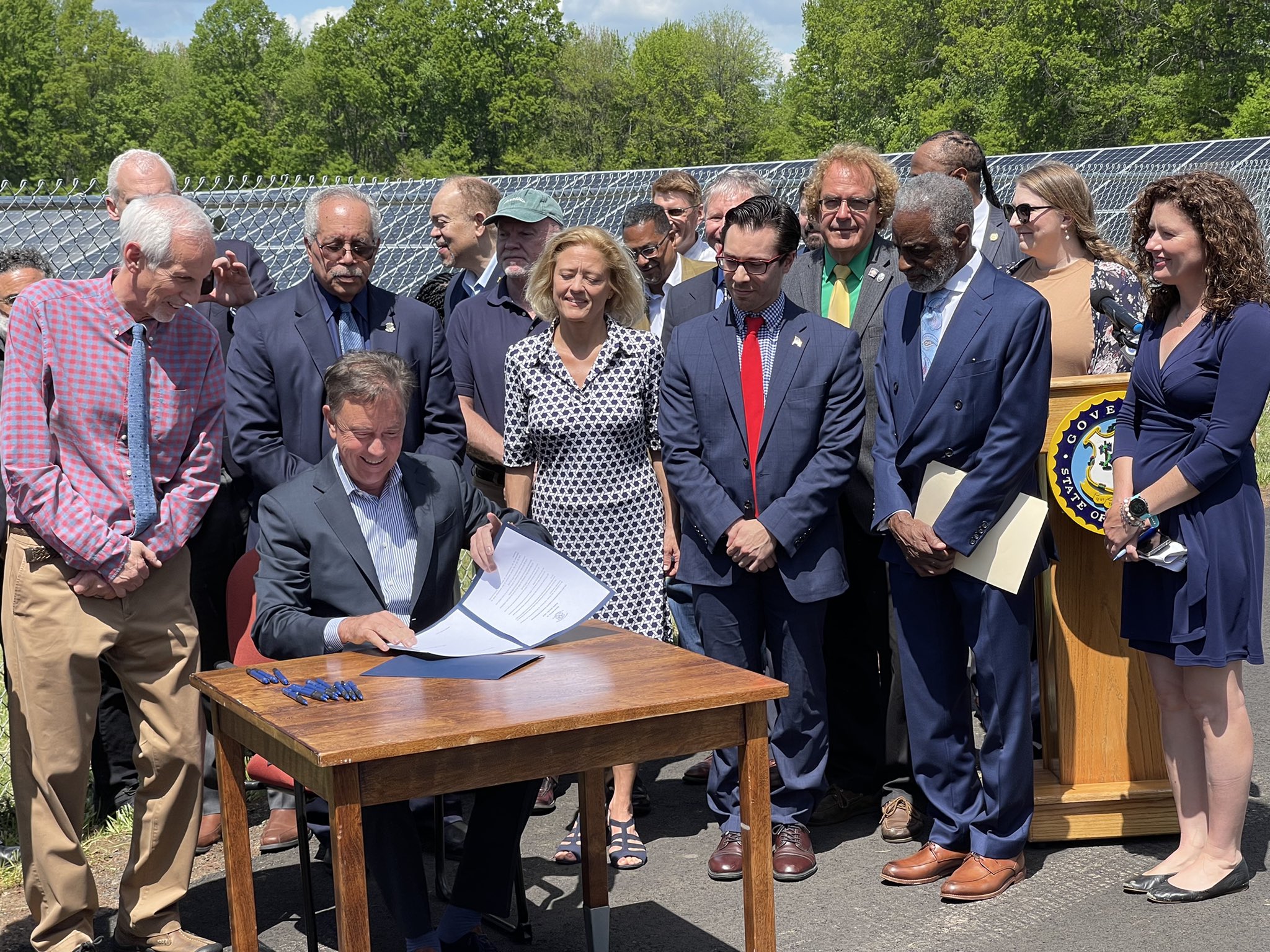Photo Credit: Governor Ned Lamont, [@GovNedLamont]. (2022, May 17th). Twitter.
SB 176 – An Act Concerning Clean Energy Tariff Programs has been signed into law. What could that mean for you?
Among other victories for renewable energy in Connecticut so far in 2022, the recent passage of SB 176 – An Act Concerning Clean Energy Tariff Programs (now codified as Public Act 22-14) expands the incentive for business and landowners of all scales throughout the state. Beyond the immediate benefit of making solar more attractive for business and landowners, this victory signals a new era of sustainability focused climate policy in Connecticut.
Here’s what it might mean for you:
Doubled Program Sizes
Two state level programs, the Non-Residential Renewable Energy Solutions (NRES) and the Shared Clean Energy Facility (SCEF) program, have had their caps doubled through SB 186. Previously capped at 50 MWs per year, the NRES program now has the capacity to allocate 100 MW of solar energy throughout the state. The SCEF Program was preciously capped at 25 MWs and has now been raised to 50 MWs. Double the number of megawatts available per program each year means higher chance of your project’s selection.
System size increase to 5 MW
A higher program system size cap means the freedom to design a system that works for you. Previously, the NRES program had a system size maximum of 2 MW. Now, if you have the space, ability, and desire for a 5 MW system, we can make that happen.
Rooftop projects are also no longer restricted to the annual onsite load, meaning you can take full advantage of your roof’s square footage to reduce the burden of your energy needs.
Unused program capacity no longer disappears
Prior to the passage of this bill, the annual capacity in both programs previously mentioned disappeared if it was not fully allocated. The removal of this restriction from the program rules means that more of Connecticut will be powered by renewable energy than ever before.




